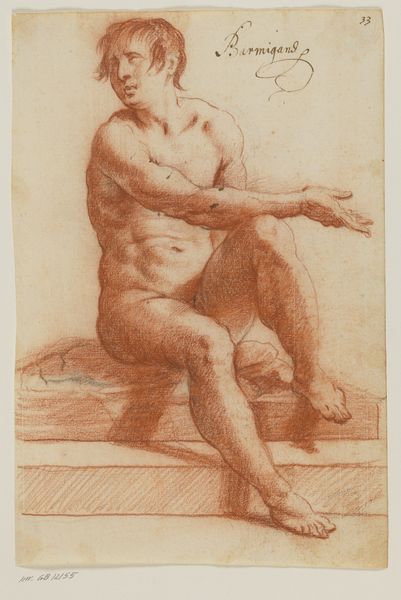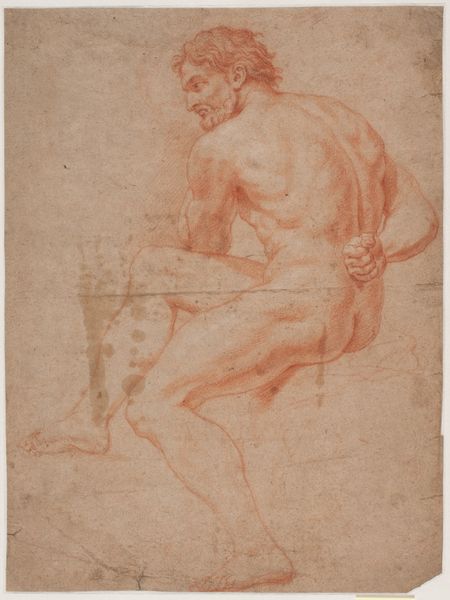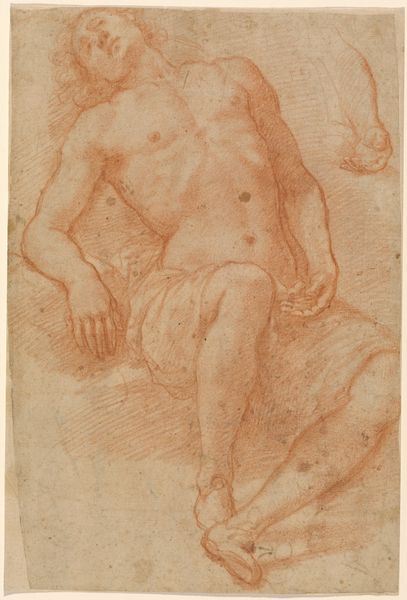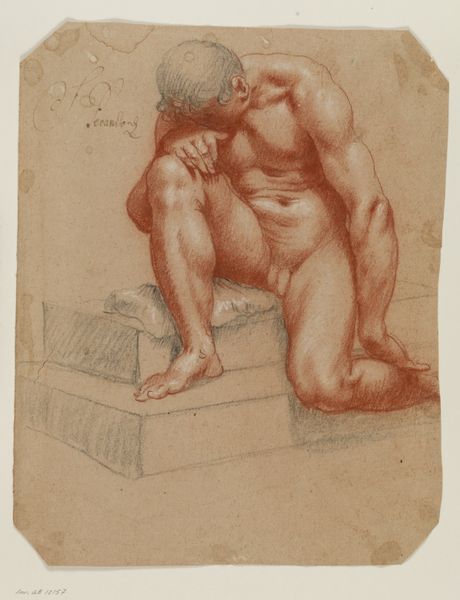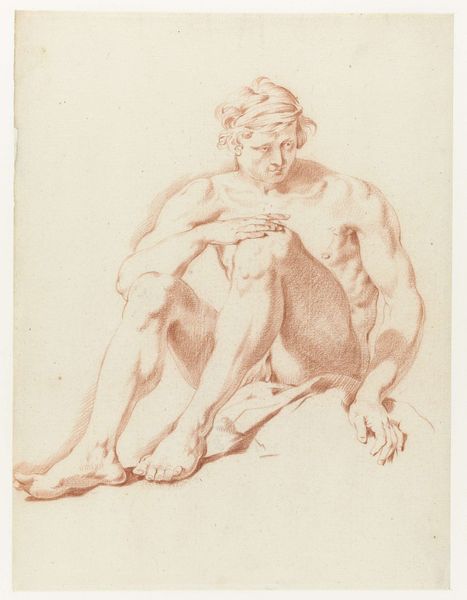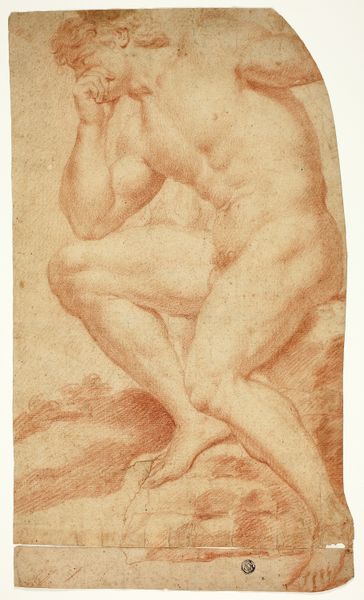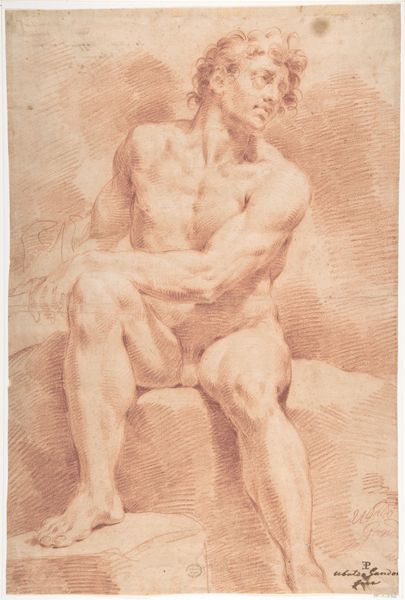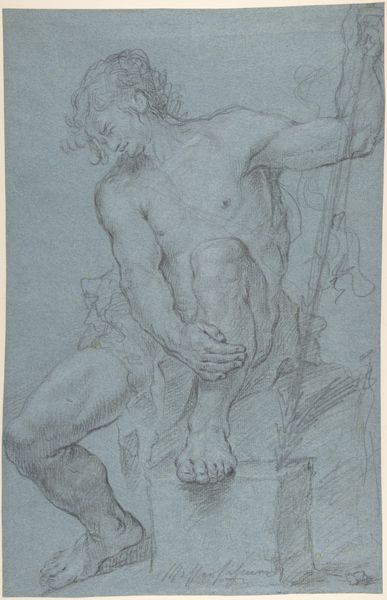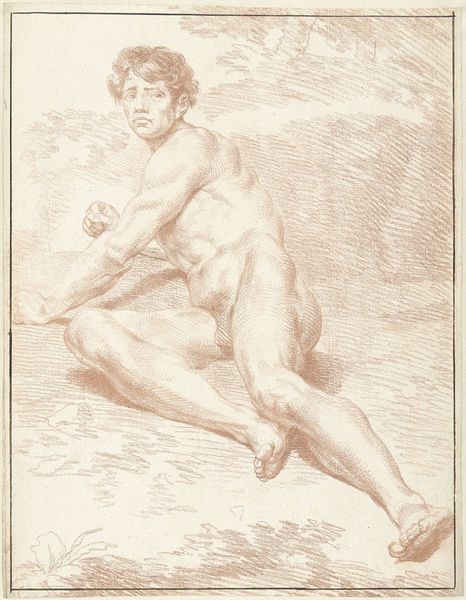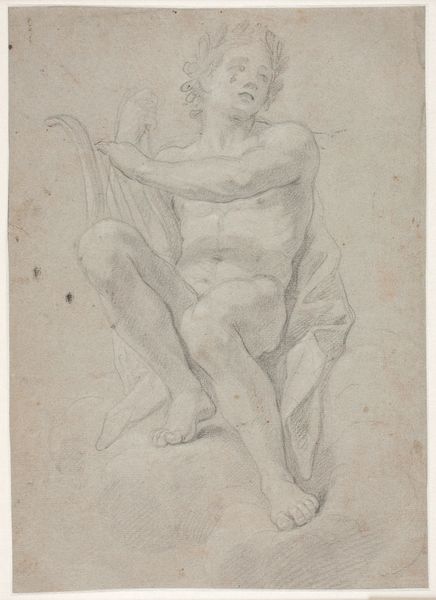
drawing, print, paper, pencil, chalk
#
portrait
#
pencil drawn
#
drawing
#
baroque
# print
#
pencil sketch
#
charcoal drawing
#
paper
#
pencil drawing
#
pencil
#
chalk
#
portrait drawing
#
nude
Dimensions: 280 × 188 mm
Copyright: Public Domain
Editor: So, this is "Nude Youth in the Pose of the Spinario," drawn by Peter Paul Rubens around 1610 to 1616. It's a chalk and pencil drawing on paper, currently at the Art Institute of Chicago. I’m struck by how raw and immediate it feels for a Baroque drawing, and the material handling is quite apparent. What can you tell me about it? Curator: It's crucial to examine this drawing not just as a preparatory sketch for a grand painting, but as a valuable artifact in its own right, reflective of studio practice and the economics of art production at the time. Consider the materiality: chalk and pencil on paper, relatively inexpensive and readily available materials. Does the apparent ‘rawness’ suggest something about the perceived value of drawing versus painting in Rubens’s time? Was this intended for public consumption, or purely for internal workshop use? Editor: That’s a really interesting point. I hadn't considered the cost and availability of the materials in shaping its aesthetic. So, instead of just thinking of it as a preliminary sketch, you're suggesting it shows us the conditions of its making, how the workshop operated… Curator: Precisely! The accessibility of these materials meant more studies could be produced, aiding in the workshop's overall efficiency and potentially influencing the style that emerged from Rubens' studio. The drawing reveals labor; Rubens is almost “mass producing” studies like this to develop ideal human forms. Can we, therefore, equate it to a type of commodity? Editor: Hmm, I suppose viewing it through that lens makes you think about the labor and the economics of Rubens' studio. I guess it takes the focus away from the artist’s singular genius and makes you think about the collective process of artmaking and how materials played a role in shaping the art we see. Thanks! Curator: Indeed. Shifting our focus to these material concerns opens up fresh perspectives, demystifying the creative process and revealing the complex socio-economic context within which art is made.
Comments
No comments
Be the first to comment and join the conversation on the ultimate creative platform.


